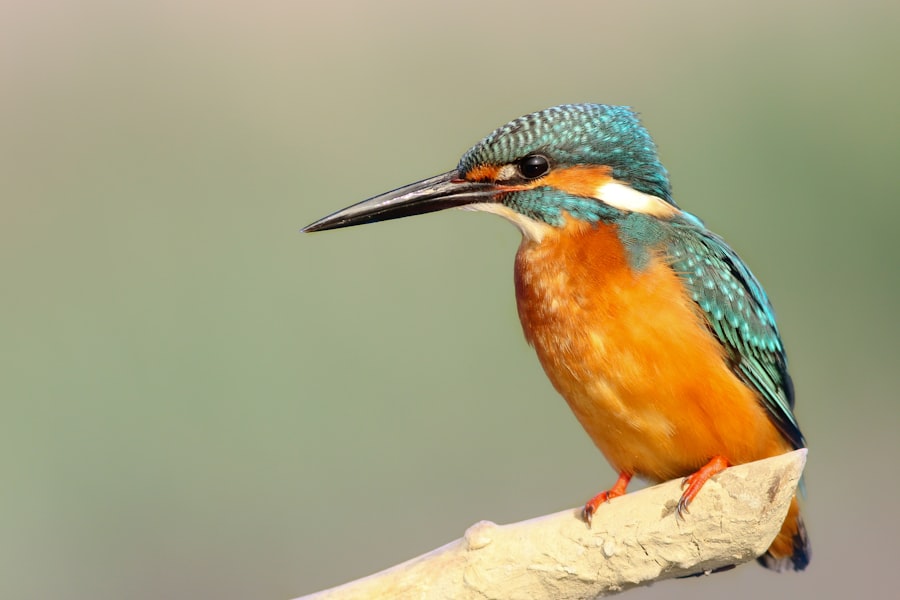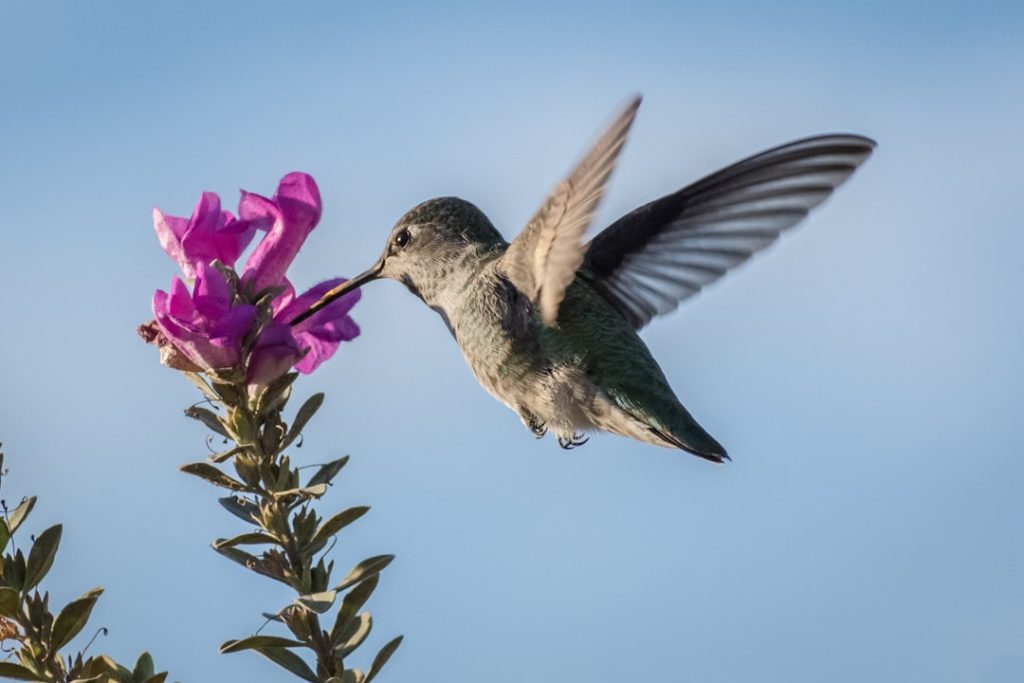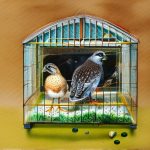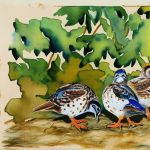Scaled quail, also known as blue quail or cotton top, are a species of New World quail native to the southwestern United States, Mexico, and Central America. They are a popular game bird and are often sought after by hunters for their delicious meat and challenging hunting experience. Scaled quail are known for their distinctive appearance, with a scaled pattern on their breast and belly, and a blue-gray coloration on their head and neck. They are also known for their unique call, which sounds like a series of whistled notes.
Scaled quail are a popular breed for both hunting and as pets due to their hardiness and adaptability. They are relatively easy to care for and can thrive in a variety of environments, making them a popular choice for both experienced and novice bird enthusiasts. Scaled quail are also known for their social nature, often forming large coveys and engaging in communal activities such as dust bathing and foraging. Overall, scaled quail are a fascinating and beautiful breed that has captured the hearts of bird enthusiasts and hunters alike.
Table of Contents
Key Takeaways
- Scaled quail are a popular breed among quail enthusiasts due to their unique appearance and behavior.
- Scaled quail are known for their distinctive scaled plumage and their preference for open grasslands and shrublands.
- Scaled quail are primarily found in the southwestern United States and northern Mexico, preferring arid and semi-arid habitats.
- Scaled quail are monogamous breeders, with the male taking the lead in courtship and the female responsible for building the nest and incubating the eggs.
- Conservation efforts for scaled quail focus on habitat preservation, predator control, and sustainable hunting practices to ensure the long-term survival of the species.
Characteristics of Scaled Quail
Scaled quail are medium-sized birds, with adults typically measuring around 10-12 inches in length. They have a distinctive appearance, with a blue-gray head and neck, and a scaled pattern on their breast and belly. Their overall coloration is a mottled brown and gray, which provides excellent camouflage in their natural habitat. Scaled quail have a short, rounded tail and long, slender legs, which are well adapted for running and foraging on the ground.
In addition to their physical characteristics, scaled quail are known for their unique behaviors. They are highly social birds, often forming large coveys of up to 30 individuals. These coveys are typically made up of family groups, with multiple generations living and foraging together. Scaled quail are also known for their distinctive call, which is a series of whistled notes that can be heard from a distance. Overall, scaled quail are a fascinating breed with a unique appearance and behavior that sets them apart from other quail species.
Habitat and Range of Scaled Quail
Scaled quail are native to the arid regions of the southwestern United States, Mexico, and Central America. They are well adapted to the harsh desert environment, with the ability to thrive in hot, dry conditions. Scaled quail are typically found in open grasslands, shrublands, and desert scrub habitats, where they can find ample cover and food sources. They are also known to inhabit agricultural areas, where they can find food such as seeds, insects, and vegetation.
Scaled quail have a wide range across their native habitat, with populations found in states such as Texas, New Mexico, Arizona, and Oklahoma in the United States, as well as in parts of Mexico and Central America. They are well adapted to the diverse range of habitats within their range, from desert scrub to grasslands to agricultural fields. Scaled quail are also known to be highly adaptable to human-altered landscapes, making them a common sight in rural and suburban areas. Overall, scaled quail have a wide range across the southwestern United States and beyond, where they can thrive in a variety of habitats.
Breeding and Reproduction of Scaled Quail
Scaled quail typically breed in the spring and summer months, when food sources are abundant and temperatures are warm. During the breeding season, males will engage in elaborate courtship displays to attract females. These displays often involve puffing up their feathers, strutting, and making vocalizations to impress potential mates. Once a pair has formed, the female will construct a shallow depression in the ground lined with grass and feathers to serve as a nest.
The female will lay a clutch of 10-15 eggs over the course of several days, with each egg being incubated for around 23 days. Once the eggs hatch, the chicks are precocial, meaning they are able to leave the nest and feed themselves shortly after hatching. The parents will lead the chicks to food sources and provide protection from predators until they are old enough to fend for themselves. Overall, scaled quail have a fascinating breeding and reproductive process that is well adapted to their arid desert habitat.
Care and Maintenance of Scaled Quail
Scaled quail are relatively easy to care for in captivity, making them a popular choice for both experienced bird enthusiasts and novice keepers. They require a spacious enclosure with plenty of room to run and forage, as well as ample cover such as shrubs or grasses to provide security. Scaled quail also require a diet that is high in protein, such as game bird feed or a mix of seeds and insects.
In addition to their physical needs, scaled quail also require social interaction with other birds. They are highly social animals and thrive in the company of other quail or similar species. Providing enrichment such as dust baths, perches, and hiding spots can also help keep scaled quail happy and healthy in captivity. Overall, scaled quail are relatively low-maintenance birds that can thrive in captivity with proper care and attention.
Challenges and Threats to Scaled Quail Populations

Scaled quail face a number of challenges and threats to their populations in the wild. Habitat loss due to urbanization, agriculture, and development is one of the biggest threats to scaled quail populations. As natural habitats are converted into human-altered landscapes, scaled quail lose vital cover and food sources, making it difficult for them to survive.
Predation is another significant threat to scaled quail populations. They are preyed upon by a variety of predators including hawks, owls, foxes, coyotes, and snakes. In addition to natural predators, scaled quail also face threats from human activities such as hunting and trapping. Overhunting can significantly impact scaled quail populations if not managed sustainably.
Climate change is also a growing concern for scaled quail populations. As temperatures rise and weather patterns become more unpredictable, scaled quail may struggle to find suitable habitat and food sources. Droughts can also have a significant impact on scaled quail populations by reducing available water sources and food.
Conservation Efforts for Scaled Quail
Conservation efforts for scaled quail focus on protecting their natural habitat, managing hunting pressure sustainably, and raising awareness about the importance of these birds in their ecosystems. Habitat conservation involves preserving key areas of grasslands, shrublands, and desert scrub where scaled quail thrive. This can be achieved through land protection measures such as conservation easements or habitat restoration projects.
Sustainable hunting practices are also important for the long-term conservation of scaled quail populations. This involves setting limits on hunting quotas, establishing hunting seasons that coincide with the birds’ breeding cycles, and enforcing regulations to prevent overhunting.
Raising awareness about the importance of scaled quail in their ecosystems is crucial for garnering support for conservation efforts. Educating the public about the threats facing scaled quail populations and the actions that can be taken to protect them is essential for their long-term survival.
Overall, conservation efforts for scaled quail involve a combination of habitat protection, sustainable hunting practices, and public education to ensure that these beautiful birds continue to thrive in the wild for generations to come.
If you’re interested in learning more about the breeding habits of quails, you might also find our article on “Do Quails Sit on Their Eggs?” to be informative. This article delves into the nesting and incubation behaviors of quails, shedding light on their unique breeding habits. Check it out here.
FAQs
What are scaled quail breeds?
Scaled quail breeds are a type of bird that belong to the New World quail family. They are known for their distinctive scaled appearance on their breast and belly, which gives them their name.
Where are scaled quail breeds commonly found?
Scaled quail breeds are commonly found in the southwestern United States, particularly in states such as Texas, New Mexico, Arizona, and Colorado. They prefer arid and semi-arid habitats with sparse vegetation.
What do scaled quail breeds eat?
Scaled quail breeds primarily feed on a diet of seeds, grains, and insects. They forage on the ground for their food and are known to consume a variety of plant matter and small invertebrates.
How do scaled quail breeds reproduce?
Scaled quail breeds typically form monogamous pairs during the breeding season. The female will lay a clutch of eggs in a shallow depression on the ground, and both parents will take turns incubating the eggs. The chicks are precocial, meaning they are able to leave the nest and feed themselves shortly after hatching.
Are scaled quail breeds kept as pets?
Scaled quail breeds are not commonly kept as pets, as they are wild birds that require specific habitat and dietary needs. In some cases, they may be kept in aviaries or as part of conservation breeding programs. It is important to check local regulations before attempting to keep scaled quail breeds as pets.
Meet Walter, the feathered-friend fanatic of Florida! Nestled in the sunshine state, Walter struts through life with his feathered companions, clucking his way to happiness. With a coop that’s fancier than a five-star hotel, he’s the Don Juan of the chicken world. When he’s not teaching his hens to do the cha-cha, you’ll find him in a heated debate with his prized rooster, Sir Clucks-a-Lot. Walter’s poultry passion is no yolk; he’s the sunny-side-up guy you never knew you needed in your flock of friends!







